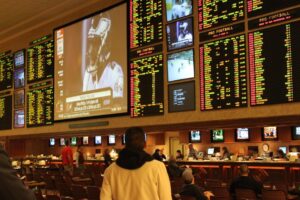Photo by Rawpixel.com, CC by 1.0
Punters are always on the lookout for extra value. Of course, betting has always some degree of risk associated with it. But, if you can play it smart and take advantage of the different betting options available, there are handsome returns to be bagged. Forecasts and tricast betting is one of the ways you can add more spice to your wagers.
A forecast is simply guessing who’ll come first and second in an event. You can place these bets before the action starts, and they’ll be settled at the runners’ starting prices.
There are three kinds of forecast bets: straight, reverse, and combination.
- In a straight forecast, your selections must finish exactly as predicted.
- A reverse forecast covers both possible orders for your two picks, meaning the stake is doubled since you’re effectively placing two bets.
- A combination forecast involves picking three to six participants, with any two needing to finish first and second in any order. The more selections you include, the higher your total stake will be.
Read on for a closer look in our forecasts and tricast betting guide.
Tricast Betting Explained
A tricast operates on the same basic principle as a forecast, but the bettor must pick the participant to occupy the third place as well.
The straight and combination options can be applied to tricasts, but as there has to be a minimum of three selections, reverse tricasts are not possible.
What makes this different from an accumulator? You can include from different competitions in a three-bet accumulator, but for a forecast or tricast bet, you need to make the picks from the same event.
However, it is possible to combine two separate forecasts from different events into a forecast double.
Forecast betting can apply to a range of sports. For example, a popular bet amongst football punters can be two teams to finish first and second in the Premier League.
Forecast and tricast betting is popular in horse racing and greyhounds in particular, with the smaller field sizes in some instances allowing the punter to narrow their focus when picking their first, second and third placed fancies.
In events with short priced favourites, forecast and tricasts can allow a bettor to extract more value from the situation and get a bigger pay out.
How Reverse Forecast Bets Work
In a reverse forecast, if the bigger priced participant finishes first and the shorter priced participant comes second, the payout can be much bigger.
For this reason, some punters prefer forecasts and tricasts as they can be played at small stakes while still offering a potentially large return.
The tricky part with forecasts and tricasts is that every selection has to finish in the top two or three. It can be frustrating when you get most of it right — say, the first and second spot — but your final pick just misses out, meaning the whole bet loses.
The requirement for forecasts and tricasts to be settled at starting price can also put off some punters who prefer to take early prices, particularly in fluid markets like horse racing.
Compared to each way bets, forecast and tricast betting can produce much bigger returns, but requires both or all three selections to finish in the first three, whereas each way betting focuses on just one selection.




